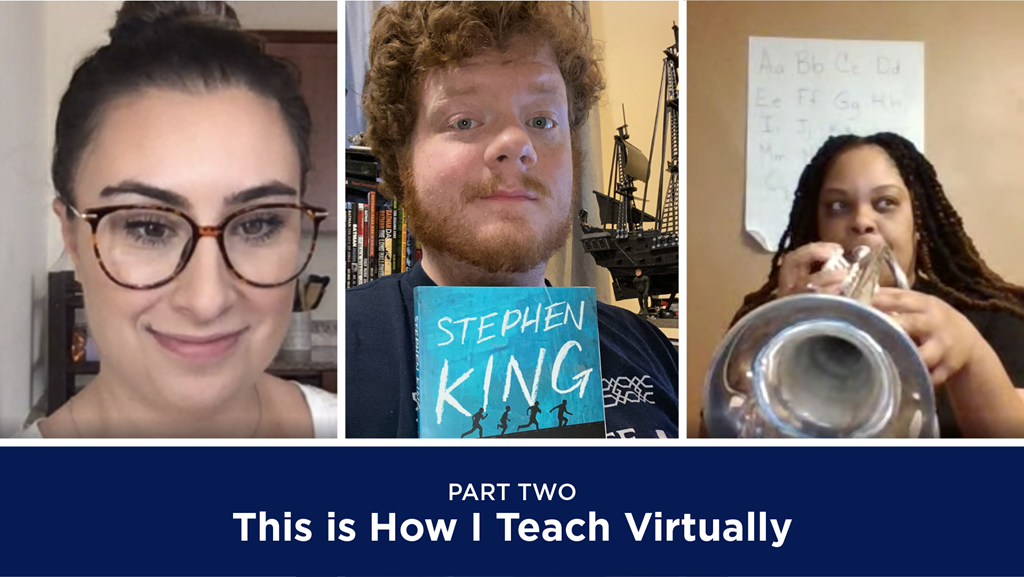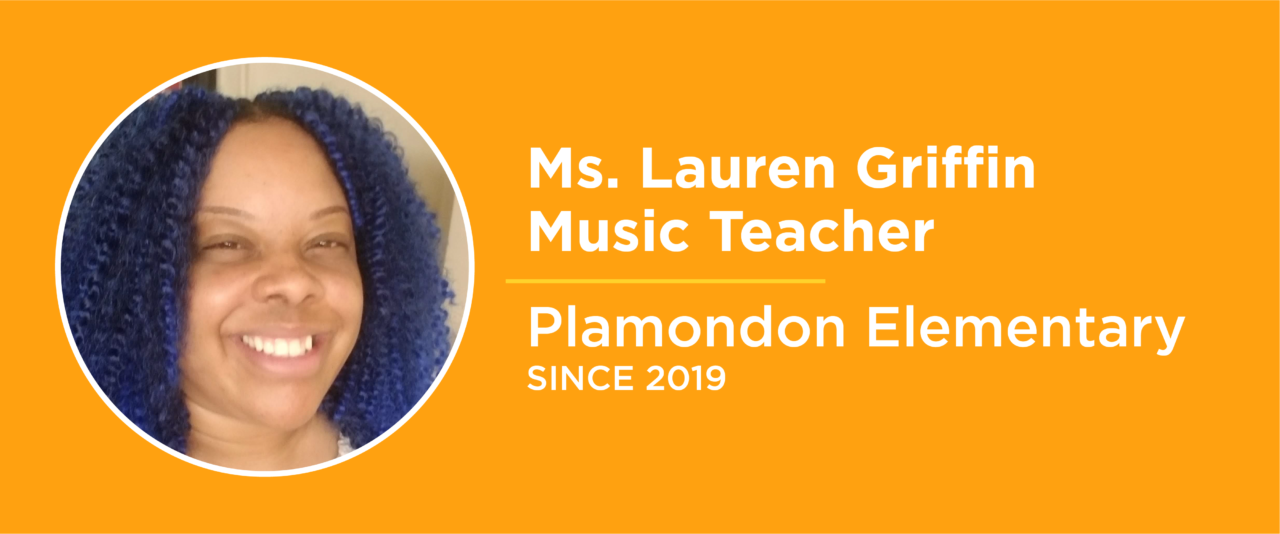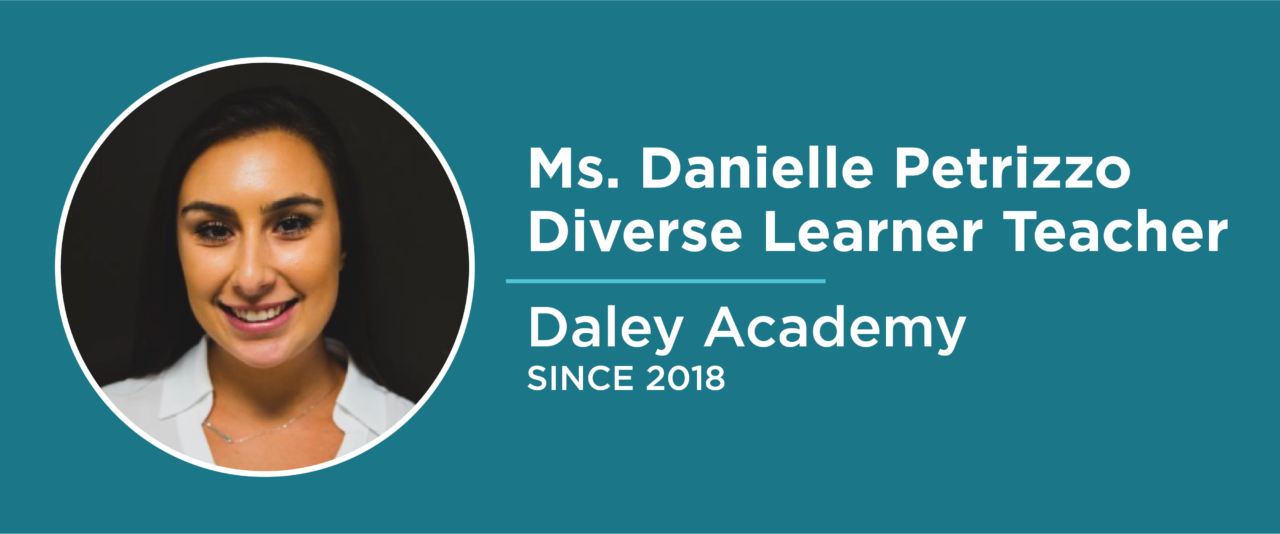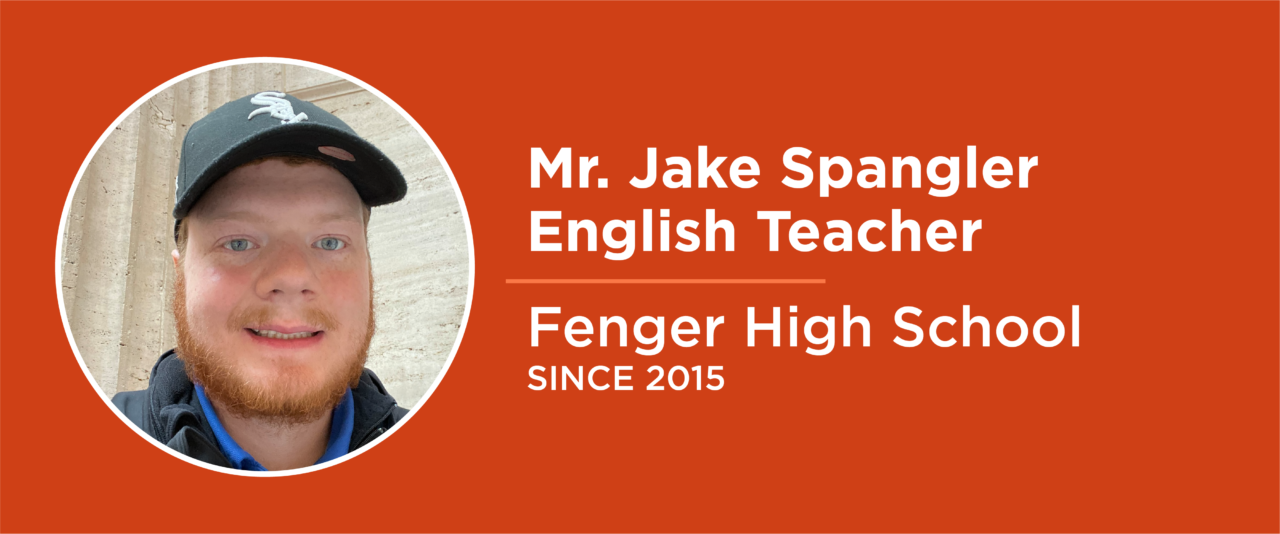Part Two: This is How I Teach Virtually
24 November 2020
After a strong start, these three teachers have started to think about what they will concentrate on to keep their momentum going.

This is the second part of a year-long blog series. Readers are following Ms. Petrizzo, Mr. Spangler, and Ms. Griffin throughout the year to learn how they connect with and inspire their students. Click here to read part one.
If you were a fly on the wall in Ms. Lauren Griffin’s second-grade music class this fall, you might have seen her students compete against each other to correctly identify instruments in each of the four main families: brass, woodwind, strings, and percussion. Then, they would take that knowledge to identify which instrument is associated with each character in Walt Disney’s Peter and the Wolf. There might even be some time for a “music and movement” break.
Now, if you were to visit her eighth-grade music class, you’d find that these students aren’t jumping at the chance to dance around to different types of music. Instead, they’ve preferred a more academic curriculum, such as reading and writing about the history of Latin American music.

In the spring, Ms. Griffin’s music class was optional, and students of all grade levels came together at the same time. Now that her classes are required and broken up by grade once again, she’s found that she’s had to differentiate her instruction more than ever before. While this has been frustrating at times, Ms. Griffin knows that the social-and-emotional benefits that come with being responsive to her students’ varying levels of comfort with learning and participating virtually are essential.
“We need to remember that we are all human. I know we have objectives, goals, and curriculum, but above it all, we need to remind ourselves that this is a lot for all of us right now,” said Ms. Griffin. “This should be about empathizing with our kids and thinking about what it must feel like to be eight years old and having to log on to Google Classroom when your headphones might not be working properly or your cousin is learning remotely right next to you.”
Once, in one of her classes where attendance has been inconsistent, she devoted the entire class period to being a “library hour” to help students catch up on their work. She says that providing opportunities to give her students an extra boost academically is important because it reminds them that no one wants to see them excel more than she does.
“As a teacher, I have to step in and say: ‘Hey guys, I need you all to be successful,’” said Ms. Griffin. “What makes it all worthwhile is getting e-mails from parents saying: ‘Ms. Griffin, you’re doing a great job. Thank you for making my student smile.’”
A focus on students’ social-emotional needs is also apparent in Ms. Danielle Petrizzo’s virtual classroom from the minute you enter. Every morning, she uses a Google poll and some emojis to see how her fourth- and fifth-grade diverse learners are feeling before they begin to learn. Whether they are extremely excited or recovering from a difficult weekend, she knows the right approach to make sure they feel supported.
“If my students are feeling upset or frustrated, I might take things slower or not have them complete as many independent tasks,” said Ms. Petrizzo. “We might do more whole-group interaction where we are all together as a class to share how we’re feeling or tread lighter through our lesson.”
The biggest difference between the spring and the fall in her classroom is the addition of digital resources to give students more choice over how they interact with her lessons independently. For example, they are currently learning about plot and the different parts of a story from the exposition to the resolution. After a group discussion, they have the opportunity to choose between reading, watching instructional videos or completing other activities on sites like Epic, Raz-Kids, or MobyMax.

Ms. Petrizzo is also continuing her role as a Multi-Classroom Leader working with the K-2 instructional team at her school. She collaborates with each teacher to create well-rounded lesson plans and identify best practices for teaching virtually through monthly team meetings. Looking closely at how her colleagues have approached remote instruction has helped remind her of what she’ll take away from the most challenging year of her career.
“This was the year of creativity,” said Ms. Petrizzo. “I had to be creative as a teacher about everything—how my kids learned and how I instructed them. Giving students more voice and more choice was key.”
In the spring, Mr. Jake Spangler discovered that maximizing student engagement in his English classes started with prioritizing what his students were interested in. This fall, he took that approach a step further and let his students vote on entire units of their instruction. Students gravitated toward a unit on scary stories because it reminded them of an activity they haven’t been able to partake in this year—watching horror films at the movie theater.
“Why would you go see a dreadfully boring 15-hour-long movie as opposed to an hour-and-a-half long thriller? It’s the same with texts in the classroom,” said Mr. Spangler. “I’m thinking about what my students would want to read and using Jamboard, Kahoot, and other digital tools to enhance the classroom experience. I even turn our weekly checkpoint assessments into a game.”
Earlier this month, Mr. Spangler’s freshmen read “The Man Who Loved Flowers,” a short story by Stephen King. They used literary devices such as tone, foreshadowing, and setting as the basis of a discussion on whether the story adhered to or deviated from the typical conventions of the horror genre. On top of written texts, Mr. Spangler has also incorporated other media—such as an episode of the modern remake of The Twilight Zone—that students analyzed as if they were reading a novel. They’ll be digging into The Body next.

“I think that every great classroom discussion starts with talking with your students about what they find meaningful and then centering your teaching approach to align with those types of materials,” said Mr. Spangler. “You can teach a skill to just about anything as long as you know the material that you’re working with.”
There are three quarters left in the school year, and all three teachers have started to think about what they will concentrate on to keep their momentum going through the winter and beyond. Ms. Petrizzo will be using data to drive her teaching. Ms. Griffin will be looking for more opportunities to engage parents. And Mr. Spangler will be collecting student feedback to plan out his next unit. We’ll check back in with each of them in early 2021.
Related Stories
25 April 2025
Taking a Leap of Faith: First-Year AP Shares Her Journey to School Leadership
AP Jordan thrives in leading with compassion and love each and every day.
18 April 2025
Celebrating Mariachi in Music Class: Take Five with Phillip Olazaba
Mr. Olazaba is known for being a caring teacher who has high expectations while still making learning fun.
18 April 2025
Learning All About a Wonderful Special Education Classroom Assistant at Skinner North Classical School
Ms. Boonstra has found a great fit as a special education classroom assistant.
17 April 2025
Introducing Trevor Nicholas: Golden Apple Finalist for Excellence in Teaching
Mr. Nick likes to remind himself that "hurry is often the opposite of love" when teaching music to students as a vehicle for healing.




